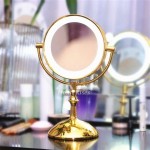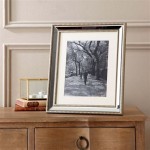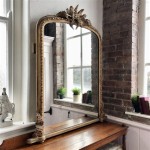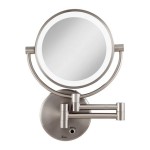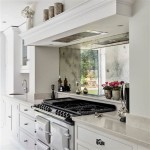Framing a Mirror With Wood
Adding a wooden frame to a mirror elevates its appearance, transforming it from a simple reflective surface into a decorative piece. Whether aiming for a rustic, modern, or traditional aesthetic, a well-crafted frame enhances the mirror's presence and complements the surrounding décor. This article provides a comprehensive guide to framing a mirror with wood, outlining the necessary materials, tools, and techniques.
Selecting the Right Wood
The choice of wood significantly impacts the frame's final appearance and durability. Hardwoods like oak, maple, and cherry offer durability and intricate grain patterns, ideal for stained finishes. Softwoods like pine and fir are more budget-friendly and easier to work with, making them suitable for painted frames. Consider the existing décor and the desired style when selecting the wood type. For a rustic look, reclaimed wood offers unique character, while a sleek, modern frame might benefit from the clean lines of walnut or mahogany.
Beyond species, the wood's dimensions are crucial. The frame's width and thickness should be proportional to the mirror's size. A larger mirror typically requires a wider and thicker frame for visual balance. The wood should also be free of knots and warping to ensure a smooth and stable frame.
Essential Tools and Materials
Gathering the necessary tools and materials beforehand streamlines the framing process. Accurate measurements are paramount, so a measuring tape and a combination square are essential. A miter saw ensures precise angle cuts for the frame's corners, while a table saw can be used for ripping the wood to the desired width. Wood glue and finishing nails secure the frame pieces together, and wood filler helps conceal any imperfections.
Additional materials include sandpaper of varying grits for smoothing the wood, wood stain or paint for the desired finish, and a protective sealant to enhance durability. Clamps are vital for holding the frame pieces together while the glue dries. Safety equipment, such as safety glasses and a dust mask, should always be worn.
Building the Frame
The first step involves accurately measuring the mirror's dimensions. The frame pieces are then cut to length, ensuring 45-degree miter cuts at each end to create seamless corners. A miter saw or a miter box with a hand saw provides the necessary precision for these cuts. It's crucial to double-check measurements before cutting to avoid costly mistakes.
Once the pieces are cut, dry-fit them around the mirror to ensure a snug fit. Apply wood glue to the mitered edges and clamp the pieces together, forming a rectangular frame. Reinforce the joints with finishing nails, driving them in at an angle for added strength. Allow the glue to dry completely before proceeding.
Finishing the Frame
After the glue has dried, fill any nail holes or imperfections with wood filler. Once the filler dries, sand the entire frame, starting with a coarser grit sandpaper and progressing to finer grits for a smooth finish. This prepares the wood for staining or painting.
Apply the chosen stain or paint according to the manufacturer's instructions. Multiple coats may be necessary for optimal coverage and color depth. Allow each coat to dry completely before applying the next. Finally, apply a protective sealant to shield the frame from moisture and scratches, enhancing its longevity.
Attaching the Mirror to the Frame
Several methods exist for securing the mirror within the frame. Mirror clips, available in various sizes, offer a simple and effective solution. These clips are attached to the frame's inner edge and hold the mirror in place. Another option involves using a backing board, slightly smaller than the frame's opening, to support the mirror. The mirror is then adhered to the backing board with mirror mastic, a specialized adhesive.
Regardless of the chosen method, ensure the mirror is centered within the frame and securely fastened. Consider adding hanging hardware to the back of the frame before inserting the mirror, simplifying the mounting process.
Considerations for Different Frame Styles
While the basic construction principles remain consistent, different frame styles require specific techniques. For example, a carved frame necessitates specialized chisels and woodworking skills. A beveled frame requires precise angle cuts on the frame's inner edge. Researching the specific requirements of the desired frame style ensures a successful outcome.
Experimenting with different wood species, finishes, and decorative elements allows for customization. Consider adding embellishments such as inlays, moldings, or decorative corner blocks to personalize the frame further and enhance its aesthetic appeal.

How To Frame A Mirror

Iheart Organizing Diy Wood Framed Mirror

Easy Driftwood Mirror The Wood Grain Cottage

Diy Farmhouse Wood Frame Mirror She Gave It A Go

Wood Mirror Diy Shanty 2 Chic

Adding Wood Trim To Our Vanity Mirror 10 Diy Growit Buildit

Mirror Frame Diy How To Update A Basic Bathroom Our Faux Farmhouse

Diy Farmhouse Wood Frame Mirror She Gave It A Go

Diy Reclaimed Wood Frames The Space Between

How To Build A Diy Wood Mirror Frame The Holtz House

